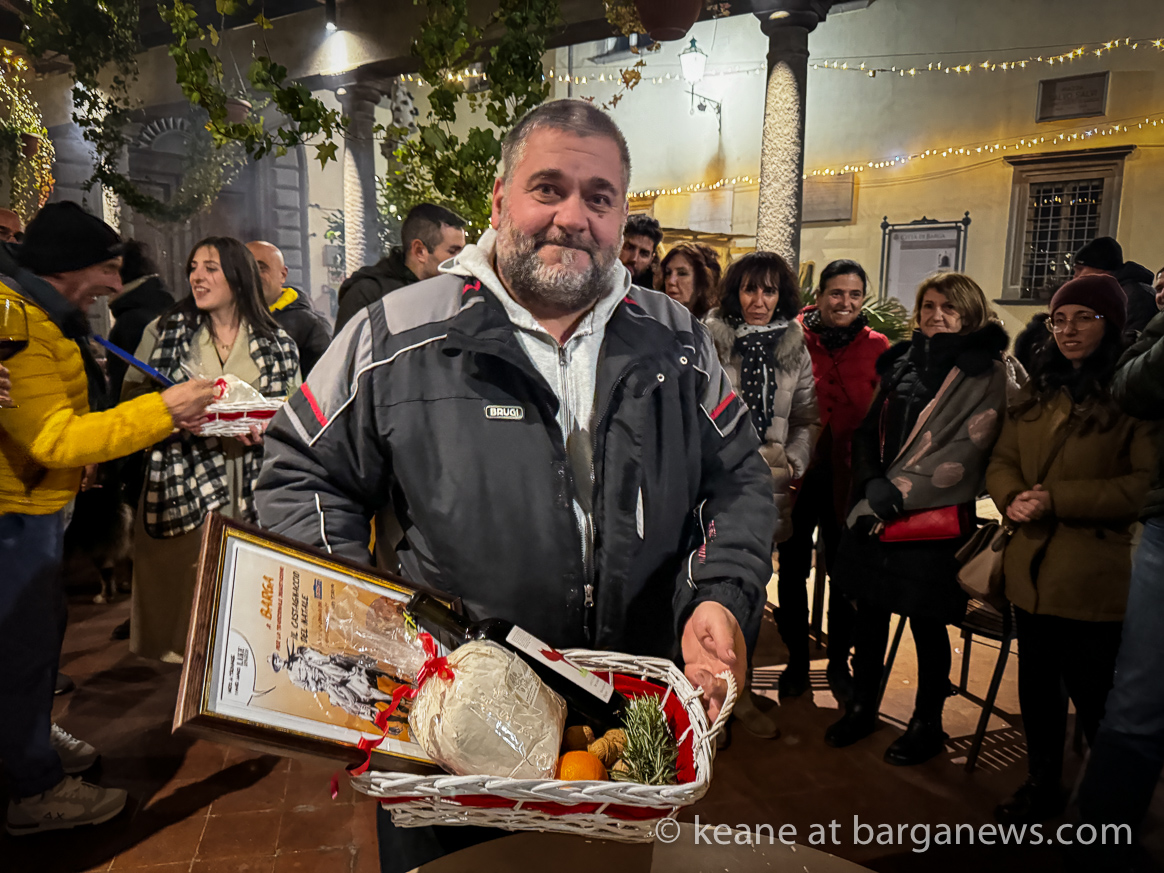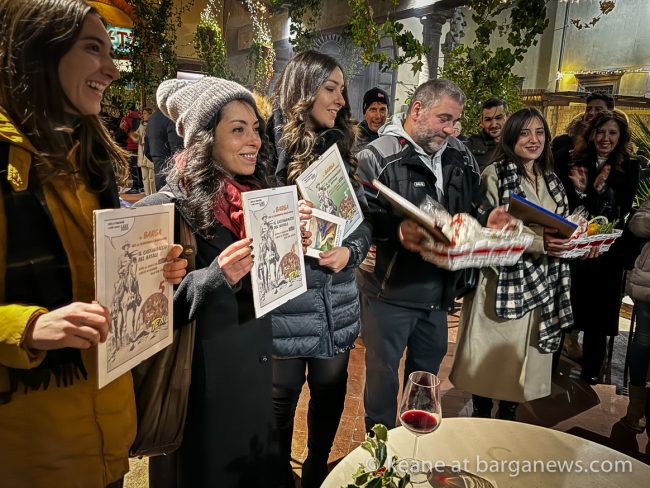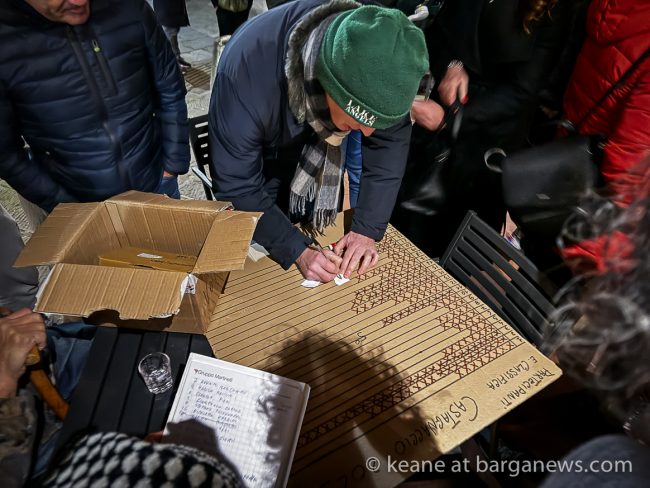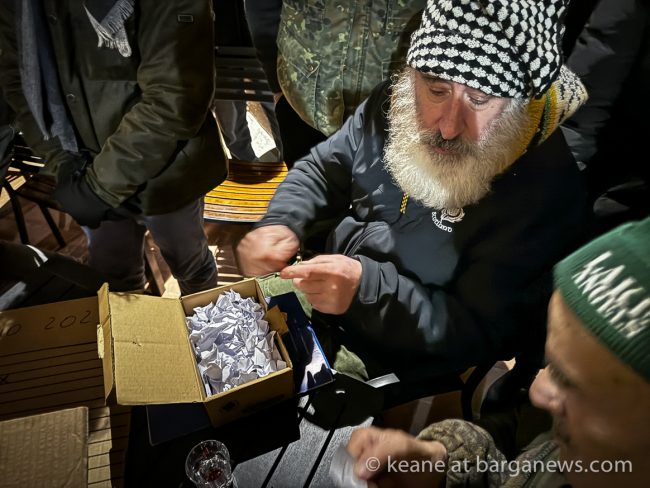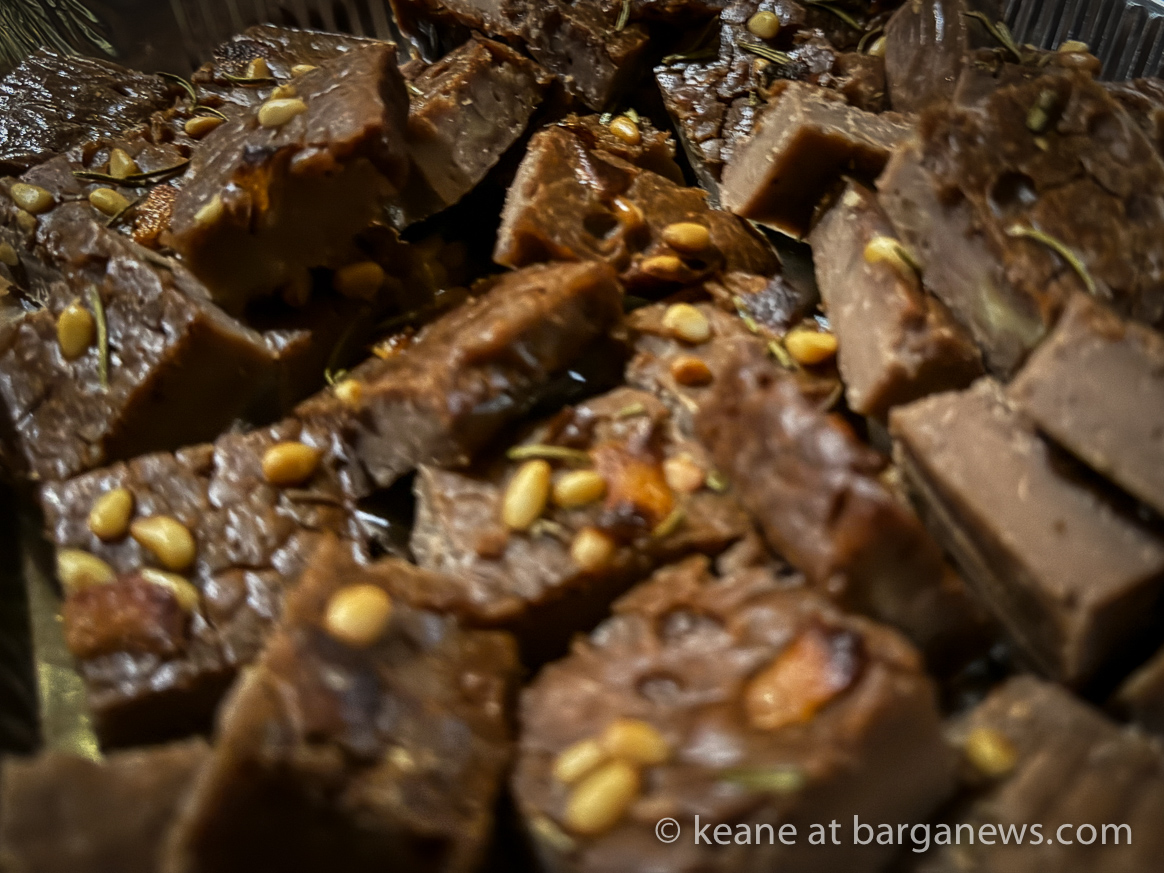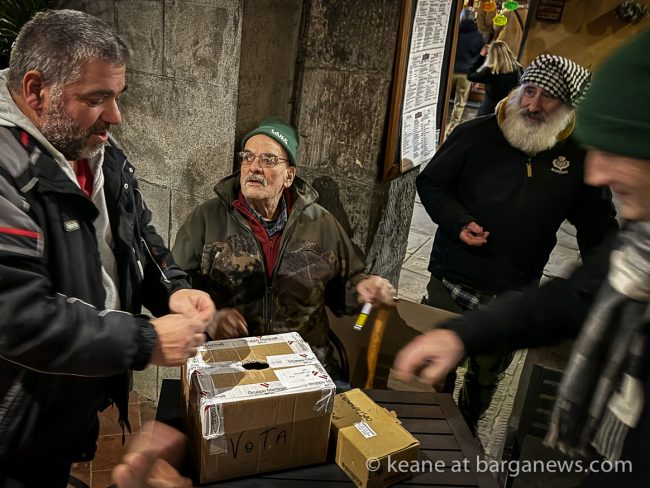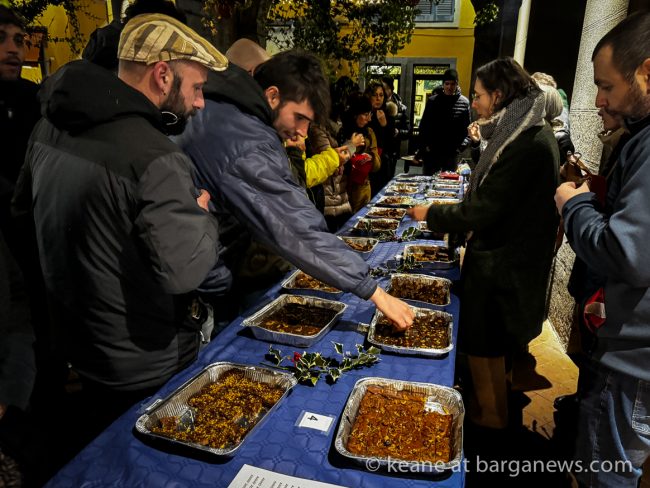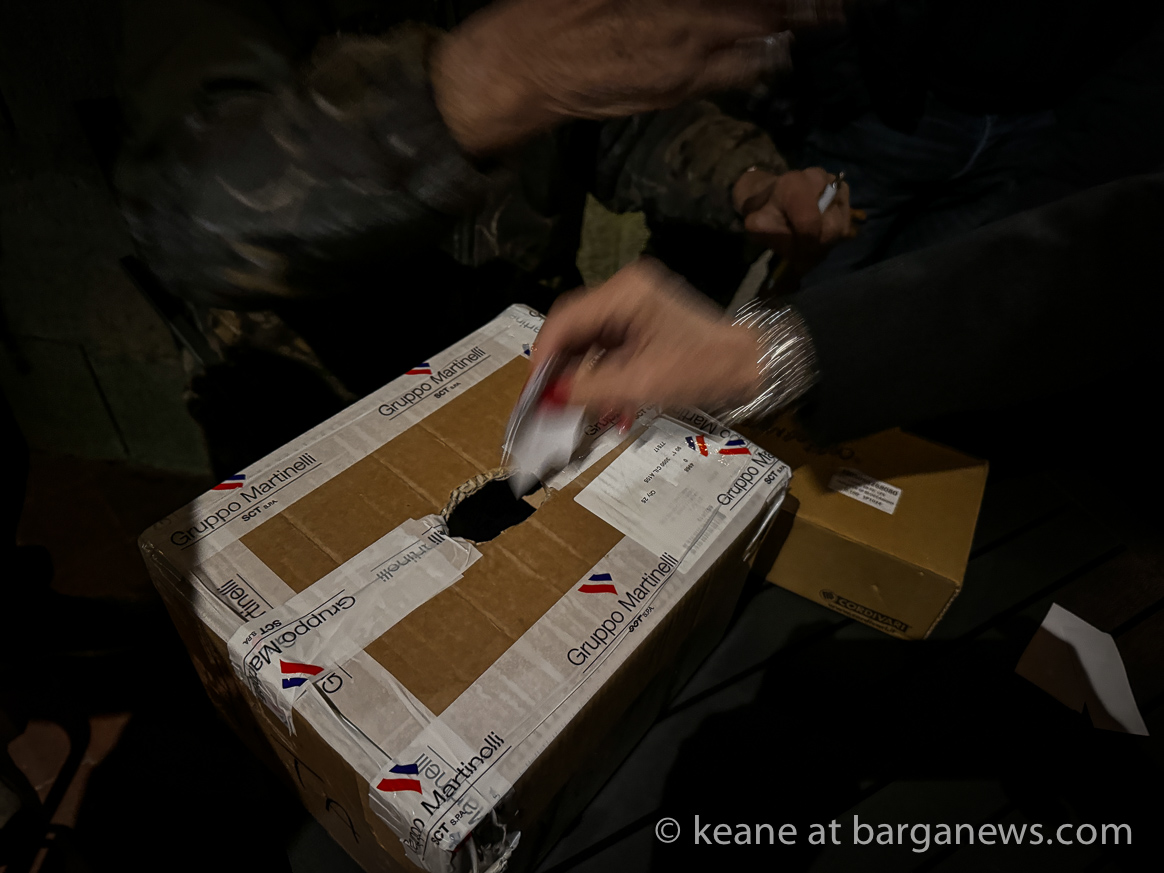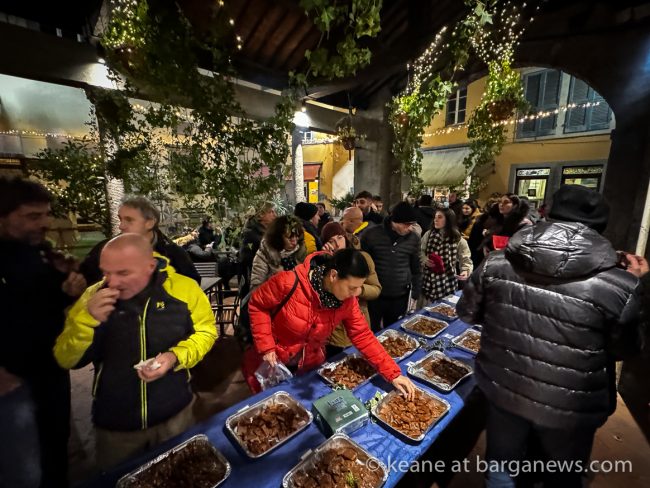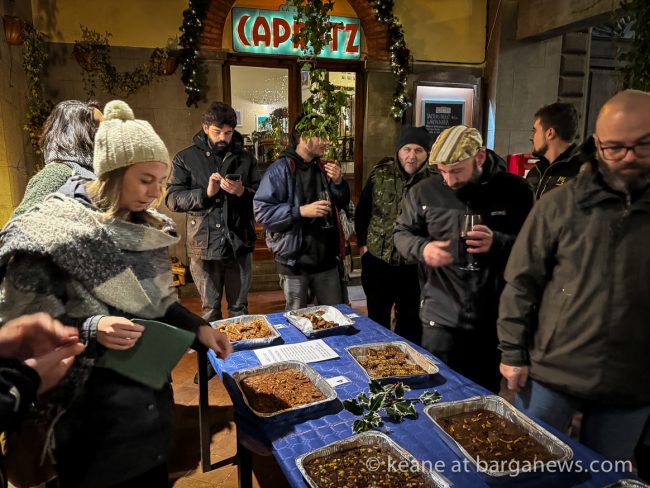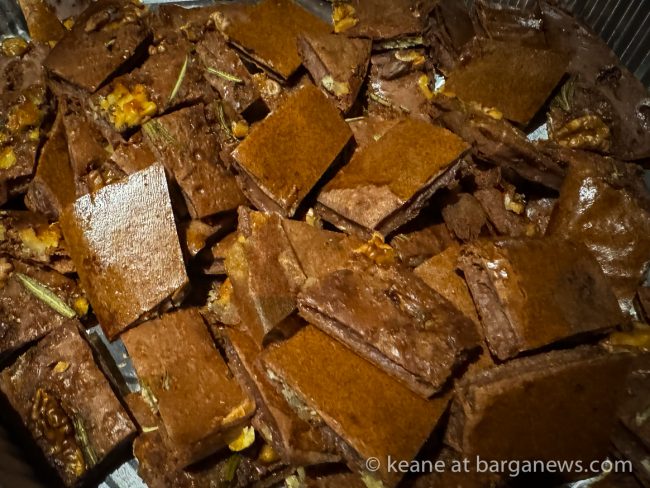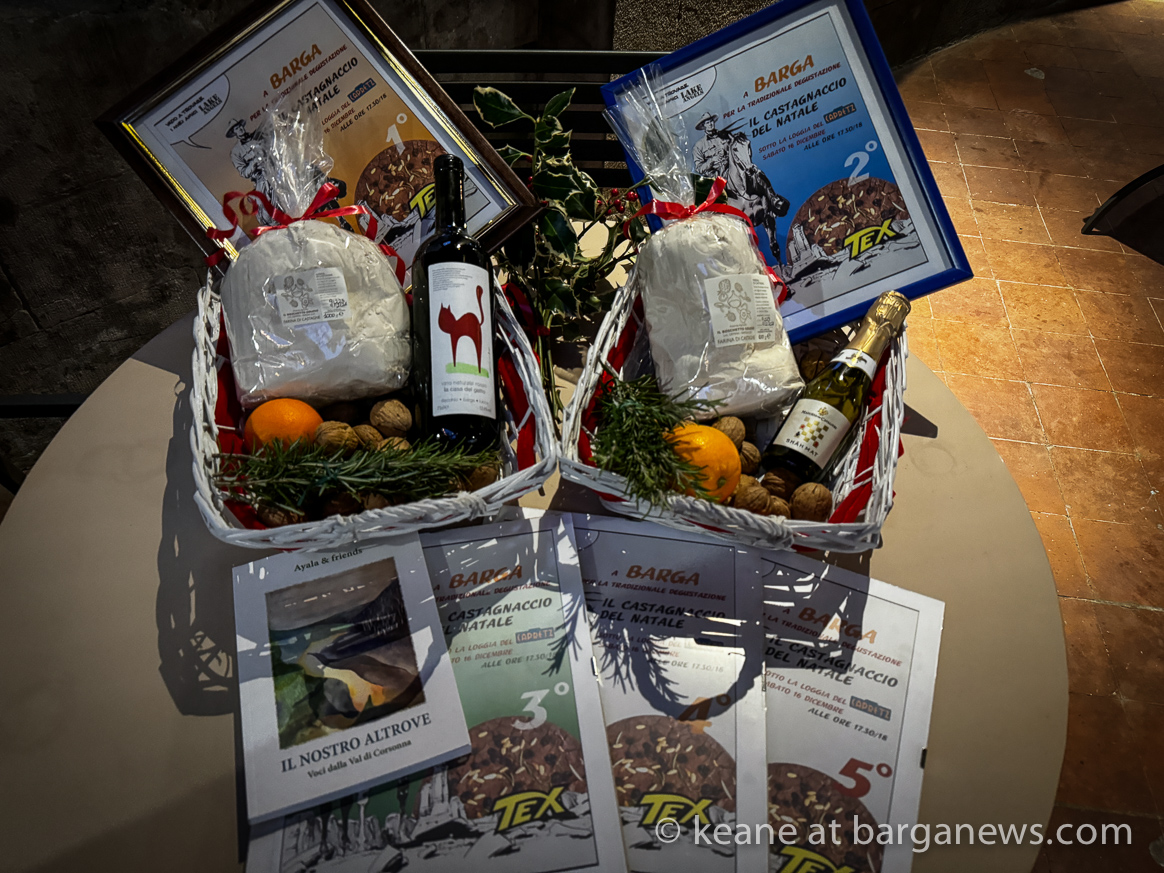The annual Castagnaccio contest took place in Barga Vecchia this evening (the first contest 2010 can be seen here )
2011 2012 2013, 2014 2015 2016 2017 2018 2019 2021
In 2010 there were just 6 contestants fighting it out for the honour of preparing the best traditional castagnaccio – the classic sweet dish from this area made from chestnut flour.
This year once again it was a fiercely contested Trophy with 24 entries
Thanks to the work of the organisers, the Lake Angels, it is once again a strictly controlled event with no names on the plates just numbers with people casting their votes for which in their opinion was the best.
ALBO D’ORO
DISCIPLINA SINGOLA CASTAGNACCIOANNO 2010 1° class. NATALE BERTOLINI
ANNO 2011 1° class. NATALE BERTOLINI
ANNO 2012 1° class. CAMILLA PALANDRI
ANNO 2013 1° class. CAMILLA PALANDRI
ANNO 2014 1° class. MARESA ANDREOTTI
ANNO 2015 1° class. MANUELA BALDISSERI
ANNO 2016 1° class. ROBERTA GUIDI
ANNO 2017 1° class. MANUELA BALDISSERI
ANNO 2018 1° class. EMILIANA SANTI
ANNO 2019 1° class: TIZIANA FACCIO – PAOLO CASCI
ANNO 2020 1° class: “COVID”
ANNO 2021 1° class: PAOLO CASCI
ANNO 2022 1° class: CATERINA BARBUTI
ANNO 2023 1° class: PAOLO CASCI
The winner this year was Paolo Casci with his traditional prepared Castagnaccio and who at the prize giving ceremony declared that it would be the last time that he would be entering the competition to allow others the opportunity of winning.
In 2011 it came as little surprise to anybody when it was announced that Natale Bertolini was awarded best Castagnaccio 2011.
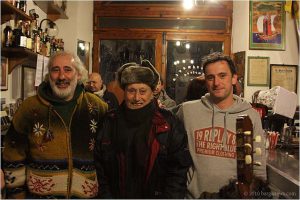 Natale Bertolini, the maestro of all things chestnut had been producing castagnaccio from his oven for the past half a century, his skill was widely known in the valley and once more he proved it by winning for the second year running the Castagnaccio del Natale Trophy 2011
Natale Bertolini, the maestro of all things chestnut had been producing castagnaccio from his oven for the past half a century, his skill was widely known in the valley and once more he proved it by winning for the second year running the Castagnaccio del Natale Trophy 2011
Natale died in May a couple of years later (article here) but the Trophy carrying his name carries on and the possibility of participating in the contest or winning it is taken very seriously.
The humble sweet chestnut has been an important ingredient in the Mediterranean diet – Homer mentions them, and Pliny even says which kinds were grown in Southern Italy. With time their cultivation spread throughout the peninsula, because they were one of the few food crops that could be grown on steep mountain slopes, and also one of the few crops that could be expected to provide sustenance through the long winter months.
By the middle ages castagne were the staple food of the peasants in large parts of Italy. In this area it has been the saviour of many people who otherwise would have starved when times got really bad and the sweet chestnut flour is still known to this day in Garfagnana as “poor mans flour”
Castagnaccio – The classic sweet dish from this area made from chestnut flour
This afternoon I tried my hand at one of the most easiest and tastiest dishes from Garfagnana and Barga – Castagnaccio The classic sweet dish from this area made from chestnut flour
I sifted 250 g of chestnut flour (good quality chestnut flour from one of the local mills at Fosciandora in Garfagnana) into a large bowl with a good pinch of salt and slowly added 200 ml of water and 200 ml of milk – the added milk does change the taste and the colour of the final castagnaccio .. (the original recipe would have been just 400 ml of water)
I stirred the mix until it was a good liquid batter.
I preheated the oven to 180° and prepared with butter the inside of a large flat oven dish.
I poured the mixture into the dish and sprinkled on top, a good couple of handful of walnuts, some pine nuts, sliced orange rinds* and a few springs of rosemary.
A couple of teaspoons of olive oil sprinkled across the top and into the oven for 40 minutes.
Cut into slices and hey presto in less than 40 minutes from start to finish – Castagniaccio.
Ingredients
250 g of chestnut flour
200 ml of water
200ml of milk
walnuts
pine nuts
sliced orange peel
rosemary
olive oil
salt
* Ok so I cheated a bit with the sliced orange peel. To add just that extra hit of sweetness, I heated them briefly in a small pan in some of the juice of the orange and added two small spoons of sugar to caramelise them. Naughty I know.
 |
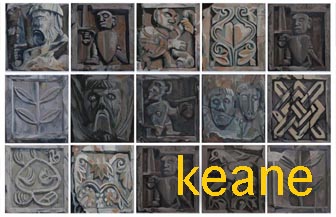 |
 |
 |
La competizione annuale del Castagnaccio si è svolta questa sera a Barga Vecchia (la prima competizione del 2010 può essere vista qui).
2011 2012 2013, 2014 2015 2016 2017 2018 2019 2021
Nel 2010 c’erano solo 6 concorrenti che si contendevano l’onore di preparare il miglior castagnaccio tradizionale, il classico dolce di questa zona fatto con la farina di castagne.
Anche quest’anno è stata una competizione accanita con 24 partecipanti.
Grazie al lavoro degli organizzatori, i Lake Angels, è ancora una volta un evento strettamente controllato senza nomi sui piatti, solo numeri, con le persone che votano per ciò che, secondo loro, è il migliore.
ALBO D’ORO
DISCIPLINA SINGOLA CASTAGNACCIOANNO 2010 1° class. NATALE BERTOLINI
ANNO 2011 1° class. NATALE BERTOLINI
ANNO 2012 1° class. CAMILLA PALANDRI
ANNO 2013 1° class. CAMILLA PALANDRI
ANNO 2014 1° class. MARESA ANDREOTTI
ANNO 2015 1° class. MANUELA BALDISSERI
ANNO 2016 1° class. ROBERTA GUIDI
ANNO 2017 1° class. MANUELA BALDISSERI
ANNO 2018 1° class. EMILIANA SANTI
ANNO 2019 1° class: TIZIANA FACCIO – PAOLO CASCI
ANNO 2020 1° class: “COVID”
ANNO 2021 1° class: PAOLO CASCI
ANNO 2022 1° class: CATERINA BARBUTI
ANNO 2023 1° class: PAOLO CASCI
Il vincitore di quest’anno è Paolo Casci con il suo tradizionale castagnaccio preparato, che alla cerimonia di premiazione ha dichiarato che sarebbe stata l’ultima volta che avrebbe partecipato alla competizione per concedere agli altri l’opportunità di vincere.
Secondo posto per Monica Marchi di Pegnana – terza posizione per Ilaria Giovannetti – quarto posto per l’azienda Il Boschetto Goloso e quinti per Federica Brizi.
Nel 2011, non è stato una sorpresa per nessuno quando è stato annunciato che Natale Bertolini ha vinto il miglior Castagnaccio 2011.
 Natale Bertolini, il maestro di tutte le cose alla castagna, produceva castagnaccio dal suo forno da mezzo secolo, la sua abilità era ampiamente conosciuta nella valle e ancora una volta lo ha dimostrato vincendo per il secondo anno consecutivo il Trofeo Castagnaccio del Natale 2011.
Natale Bertolini, il maestro di tutte le cose alla castagna, produceva castagnaccio dal suo forno da mezzo secolo, la sua abilità era ampiamente conosciuta nella valle e ancora una volta lo ha dimostrato vincendo per il secondo anno consecutivo il Trofeo Castagnaccio del Natale 2011.
Natale è morto nel maggio di un paio d’anni dopo (articolo qui), ma il trofeo che porta il suo nome continua e la possibilità di partecipare o vincerlo è presa molto seriamente.
La dolce castagna è stata un ingrediente importante nella dieta mediterranea: Omero ne parla, e Plinio dice persino quali tipi crescevano nel Sud Italia. Con il tempo la loro coltivazione si diffuse in tutta la penisola, perché erano uno dei pochi cereali che potevano essere coltivati su ripidi pendii montani, e anche uno dei pochi cereali che potevano essere previsti per fornire sostentamento durante i lunghi mesi invernali.
Nel medioevo, le castagne erano il cibo principale dei contadini in gran parte dell’Italia. In questa zona, sono state la salvezza di molte persone che altrimenti sarebbero morte di fame quando le cose si facevano davvero difficili, e la farina di castagne è ancora conosciuta oggi in Garfagnana come “farina da poveri”



